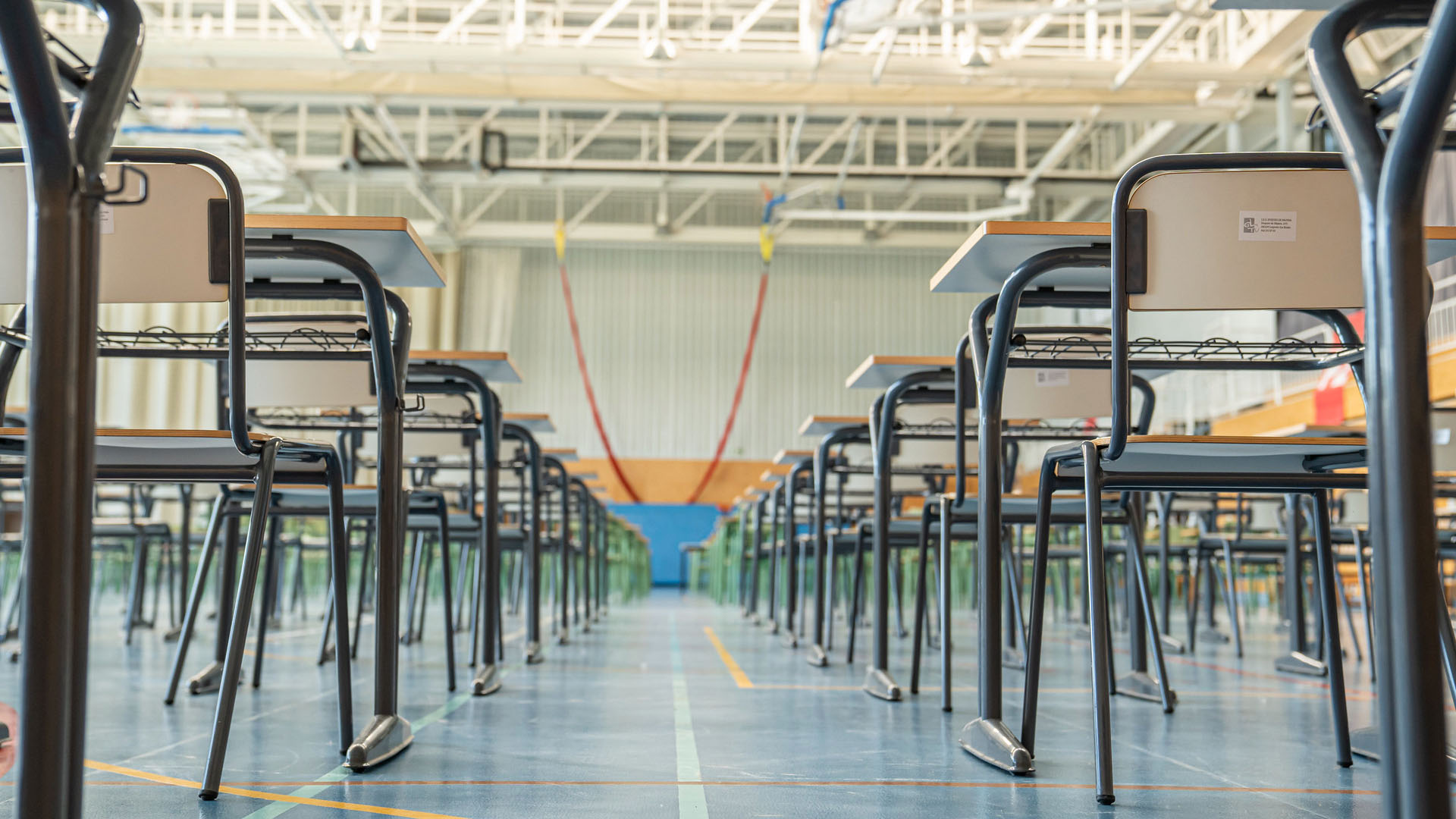Spain’s education attainment is lopsided. In 2023, at the high end of the spectrum, 52% of 25-34 year-olds held a tertiary qualification, usually a university degree but sometimes a vocational qualification –well above the OECD average of 47%– while at the low end 26% of the same age group had not completed the last two years of secondary education (16-18 year-olds), far higher than the OECD average of 14%.
That high percentage of those with only basic education (the legal school leaving age is 16) is much lower, however, than in 2016 when the share was 35%, while those with tertiary education has surged from 41%.
While the poorly educated have limited job prospects, the problem for the many graduates is that they often find they are over-qualified for the job they manage to land in a country with a still high unemployment rate (close to 12%, double the EU average). Spain’s over-qualification rate in 2023 was the highest in the EU at 34%, well above the bloc’s average of 21%.[1] It has been stuck at around this level for more than a decade. This serious over-qualification and field-of-study mismatch among university graduates leads the brightest and boldest to emigrate in search of the job they want.
Spain’s over-qualification rate in 2023 was the highest in the EU at 34%, well above the bloc’s average of 21%.
These figures come from the OECD’s latest Education at a Glance report, published last month, which enables international comparisons to be made between 38 countries. Meanwhile the Paris-based think tank’s Programme for International Student Assessment (PISA) gauges the performance of 15-year-old students in mathematics, science and reading. The last tests were conducted in 2022 and the results released last December.
Among the other big EU countries, Spain has by far the highest share of 25-34 year olds with below upper secondary education and also (along with France) the highest tertiary attainment. The rates for below upper secondary education are 11% for France, 16% for Germany, 20% for Italy and 5% for Poland. For tertiary education the rates are 52% 38%, 30% and 46%, respectively.
It is an axiom that the higher the attainment the better the employment prospects. In Spain, 63% of 25-34 year-olds without an upper secondary education qualification are employed, just above the OECD average of 61%, while 71% of those with an upper secondary or post-secondary non-tertiary qualification (OECD average of 79%) have a job. Attainment is also reflected in wages: 33% of 25-64 year-olds in Spain with just basic education earn at or below half the median income compared with 26% of workers who did not leave school at the minimum age.
The global financial crisis in 2008 and the simultaneous bursting of Spain’s massive property bubble brought home to many families the importance of education. Many of those who lost their jobs in the over-sized construction sector had left school at 16 and found it difficult to get work elsewhere. Depending on their age and circumstances, some continued their education. Spain’s NEET rate (neither in employment nor in education or training) for 18-24 year-olds fell from 23.2% in 2016 to 17.8% in 2023, a steeper fall than across the OECD as a whole (from 15.8% to 13.8%).
In the PISA tests, Spain’s performance has deteriorated over the years. The mean scores in the 2022 tests were lower than in the first tests for each subject some 20 years ago. The latest results are slightly above the OECD average in mathematics, a little above in reading and the same in science (see Figure 1).
Figure 1. Mean scores of selected countries in 2022 PISA tests in mathematics, reading and science
| Mathematics | Reading | Science | |
|---|---|---|---|
| OECD average | 472 | 476 | 485 |
| Singapore | 575 | 543 | 561 |
| Netherlands | 493 | 459 | 488 |
| UK | 489 | 494 | 500 |
| Poland | 489 | 489 | 499 |
| Germany | 475 | 480 | 492 |
| France | 474 | 474 | 487 |
| Spain | 473 | 474 | 485 |
| Italy | 471 | 482 | 477 |
| US | 465 | 504 | 499 |
The results by region are strikingly different. Castile & León, for example, scored substantially above all three OECD averages, while the results in the Canary Islands were well below all three (see Figure 2). Castile & Leon’s score in mathematics was higher than the Netherlands and in science better than the UK’s. This region is not one of Spain’s richest, and its high scores would seem to suggest it manages education (devolved to the regions) better and that its teachers are more effective.
Figure 2. Mean scores of Spain’s regions in 2022 PISA tests in mathematics, reading and science
| Mathematics | Reading | Science | |
|---|---|---|---|
| OECD average | 472 | 476 | 485 |
| Castile & León | 499 | 498 | 506 |
| Asturias | 495 | 497 | 503 |
| Cantabria | 495 | 494 | 504 |
| Madrid | 494 | 496 | 502 |
| La Rioja | 493 | 487 | 500 |
| Navarre | 492 | 478 | 489 |
| Aragón | 487 | 488 | 499 |
| Galicía | 486 | 485 | 506 |
| Basque Country | 482 | 466 | 480 |
| Spain | 473 | 474 | 485 |
| Valencia | 473 | 482 | 483 |
| Balearic Islands | 471 | 472 | 480 |
| Catalonia | 469 | 462 | 477 |
| Extremadura | 469 | 468 | 479 |
| Castile-La Mancha | 464 | 468 | 475 |
| Murcia | 463 | 468 | 482 |
| Andalusia | 457 | 461 | 473 |
| Canary Islands | 447 | 463 | 473 |
Demography can also impact results. The last Catalan government, for example, attributed its poorer PISA results to the region having a higher share of immigrants taking the PISA tests than other regions. It said the children of immigrants accounted for 15.7% of total students in Catalonia, but the immigrant share of those taking the tests was 24%.
PISA also assesses the financial literacy of 15-year-olds. Spain scored 486, below the average of 498. Some 17% of students do not reach the baseline of proficiency, close to the OECD average of 18%. Baseline proficiency means these students can identify common financial products and terms and make simple decisions on everyday spending in situations they are likely to have personally encountered. But only 5% are top performers (11% average), able to analyse complex financial products and solve non-routine financial problems.
Figure 3. Financial literacy ranking in 2022 PISA test
| Score | Score | ||
|---|---|---|---|
| Belgium | 527 | Norway | 489 |
| Denmark | 521 | Spain | 486 |
| Canada | 519 | Italy | 484 |
| Netherlands | 517 | United Arab Emirates | 441 |
| Czech Republic | 507 | Bulgaria | 426 |
| Austria | 506 | Peru | 421 |
| Poland | 506 | Costa Rica | 418 |
| US | 505 | Brazil | 416 |
| Portugal | 494 | Saudi Arabia | 412 |
| Hungary | 494 | Malaysia | 406 |
In general, the better a student’s performance in mathematics and reading, the better the performance in financial literacy. Spain, however, performs worse in financial literacy than students from other countries who perform similarly in mathematics and reading. Students in Spain scored, on average, 7 points lower in financial literacy than would have been expected based on their performance in mathematics and reading.
A major factor here is that many schools do not include financial literacy in their obligatory curriculum. Spain is not alone. Earlier this month, UK business leaders urged the government to make financial education compulsory in all English schools. Financial education was added to the curriculum in 2014, but it is largely incorporated in non-core subjects.
Grade repetition remains a problem in Spain: 2.1% of primary school students, 7.8% of lower secondary and 6.5% of upper secondary repeat, compared with the respective OECD averages of 1.5%, 2.2% and 3.2%. The effectiveness of repeating is debated: it can often demotivate a student and lead to him or her (usually him) to leave school at 16. Nevertheless, Spain’s early school-leaving rate has fallen every year since 2013, from a whopping 23.6% to 13.6% last year, albeit still above the EU average of 9.5%.
Greater importance is finally being given to dual vocational training scheme contracts and vocational education and training (VET) in general, but the level of enrolment and quality are still far from Germany’s. More than one million students took VET courses in 2022-23, 36.2% more than five years earlier. For every five Spaniards at university, around one is instead doing VET, whereas in Germany it is the other way round. A vocational training qualification can often lead to a job more quickly than a degree.
The influx of immigrants over the past 30 years has been a challenge for the education system. One in every seven students today is an immigrant, higher than the OECD average. Second-generation immigrants scored significantly better than first-generation immigrants in the latest PISA mathematics tests, as they tend to be more settled and better assimilated, but even so they are still well below the non-immigrant score (see Figure 4).
Figure 4. Performance in 2022 PISA mathematics test of immigrant and non-immigrant students
| % of immigrant students | Non-immigrant mean score | Second-generation immigrant students mean score | First-generation immigrant students mean score | |
|---|---|---|---|---|
| OECD average | 12.9 | 479 | 459 | 435 |
| Germany | 25.8 | 495 | 457 | 398 |
| France | 16.5 | 485 | 438 | 425 |
| Spain | 15.1 | 481 | 459 | 433 |
| Italy | 10.7 | 476 | 453 | 430 |
Spain has had eight new education laws since 1977 as the Socialists (PSOE) and the conservative Popular Party (PP) have alternated in power. The lack of consistency and consensus may have contributed to the declining performance in the PISA tests. One endemic problem is the insistence on rote learning and memorisation. Hopefully changes in the exam for university entrance, known as Selectividad, announced for 2025 and the biggest reform of it in 50 years, which are designed to encourage more reasoning and critical thinking, will prove beneficial. More than one month after the start of the new academic year, however, the more than 300,000 students facing the new exam next June have no idea what it will consist of, and angrily staged a strike earlier this month.
Meanwhile there is also plenty of room for improvement at the universities. Spanish universities are notoriously endogamous; too often nepotism and favouritism rather than ability determine which lecturers are hired. External evaluation is partial and sometimes cursory.
Overall, Spain’s mark has to be: ‘could do better’.
[1] The rate is calculated for employed persons with a tertiary level of educational attainment and shows the proportion of people employed in jobs for which this level of education is not required.



